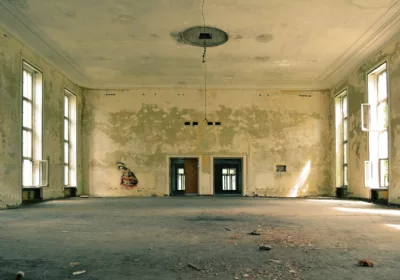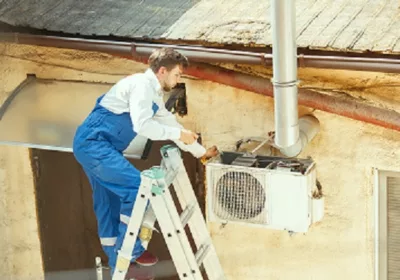
A Complete Guide on What Is Concrete and What to Do With It

What is concrete?
Concrete is made from cement, sand, gravel, and additives. The dry mixture is called concrete mortar. When you add water to concrete mortar, it becomes concrete.
Hydration – a reaction between water and cement – produces the well-known stone-like material after the concrete has cured.
The annual production of approximately 9 billion tons makes concrete the most used building material worldwide
What is cement?
Cement is a fast-setting binder. The raw materials for cement are limestone and clay or sand. This is heated in ovens to 1500 ° C, creating cement clinkers. Cement clinkers are ground into powder for use as a binder in cement products.
To control the curing time and increase the compressive strength, gypsum is added. This powder mixture (cement) reacts with water to form a stony material. Cement is the main raw material for the production of concrete and masonry mortar.
What is a mortar?
Mortar consists of the cement binder, one or more aggregates such as sand or gravel, and additives such as a bond retarder. Sometimes the word cement is used, which actually refers to mortar.
Mortar is used for bricklaying, pouring a concrete or sand cement floor, tile or plaster, joints, plasterers, and more. Water is added to the dry mixture to make grout.
What is grout?
The composition of the mortar used determines what the mortar can eventually be used for.
Masonry mortar is used, for example, for tile and plasterwork or joints and plasterers. Due to the added components, masonry mortar has a different composition than concrete mortar for, for example, a concrete foundation or concrete floor.
What is the concrete mortar?
Concrete mortar is a liquid mixture consisting of cement, sand, gravel, and water, composed in a specific ratio. Fresh concrete mortar has not yet hardened. That is why it is still deformable (plastic) and easy to process. As soon as fresh concrete has hardened, we call it concrete.
Depending on the application, additives are added, such as a bonding retarder. Fresh concrete is delivered ready-made by concrete plants.
What is the composition of 1 m³ of concrete?
A cubic meter of concrete (1 cubic meter, or 1 m³) is usually composed for simple concrete works according to the 1-2-3 formula: 1 part cement, 2 parts sand, 3 parts gravel. Cubic meter is indicated with the symbol m³ and corresponds to 1000 liters.
A cube is 1 meter long, 1 meter wide and 1 meter deep.
Composition 1m3 concrete
- Gravel: 1000 Kg
- Sand: 800 Kg
- Cement: 350 Kg
- Water: 175 L.
What is the specific gravity of concrete?
Non-compacted concrete weighs about 2300 kg per m³ (cubic meter). The weight of compacted concrete is approximately 2400 kg per m³.
Reinforced concrete weighs approximately 2500 kg per m³ in a compacted state. With the concrete calculator, you can calculate the required amount of concrete. You can see how many bags of pre-mix concrete or how many m³ of ready-mixed concrete mortar you need.
What is specific gravity?
The specific gravity of concrete actually means the specific mass or density. The specific mass or density is indicated by means of the Greek letter ρ (rho).
In physics and chemistry, the density or specific mass of a material is the amount of mass of that material that is present in a given volume. This is expressed as the ‘mass per unit volume’ and not as specific weight.
Roman concrete
More than two thousand years ago, around 300 BC, the Romans started producing and using concrete for their structures and works of art.
The Romans used a mixture of volcanic ash, calcined lime, and seawater to form the mixture (opus caementicium). They wrapped it in wooden forms. Once paved, the blocks stacked like a contemporary brick.
It turns out that Roman concrete is not only more durable than concrete we can produce today, but it actually gets stronger over time!
What is reinforced concrete?
Reinforced concrete reinforced with steel is called reinforced concrete. Concrete can withstand large compressive forces but is not very resistant to tensile, shear, and transverse forces.
Due to the low tensile strength, for example, steel reinforcement meshes or reinforcing bars are applied in the areas where tensile stresses are expected after loading. Steel has high tensile strength, so reinforcing steel ensures the transfer of tensile forces.
Steel reinforcement meshes or reinforcing bars are most commonly used to reinforce concrete. Sometimes other materials are used as concrete reinforcement material for specific applications; for example, carbon glass or plastic fibers.
Regulations have been drawn up for the application of armament. Especially when pouring structures it is important that the correct reinforcement is used and that it is applied in accordance with the regulations ( Eurocode 2 ). Fixed overlap lengths are used.
What is unreinforced concrete?
Reinforced concrete is not reinforced with reinforcement material. Unreinforced concrete is not suitable for supporting structures and is used when high tensile forces are not expected.
For the installation of fencing, posts, or playground equipment, etc., unarmed ‘quick-drying concrete’ is usually used. The admixtures in quick-drying concrete ensure that it can be hardened after 15 minutes and after 2 hours.
What is concrete used for?
Concrete is used for building bridges, tunnels, artwork, pools, apartments, houses, concrete floors, and more. Because concrete is initially liquid and then extremely hard, it can be used for many purposes.
In Australia, almost 14 million m³ of concrete is produced per year, which is 14 billion liters.
A concrete floor is also usually used for interior and exterior walls, foundations, or the floors of, for example, industrial halls, warehouses, sheds, storage areas, livestock stables, lofts, (parking) garages, or for terrace floors.
What is the drying time of concrete?
Concrete can be walked on after just a few hours. The complete drying time is 28 days. Then the concrete is fully cured and has reached the characteristic concrete compressive strength. The concrete compressive strength determines the extent to which the concrete can withstand compressive forces.
During the drying of concrete, a chemical reaction occurs which makes the concrete harder. The drying process is therefore actually a hardening process. During this hardening process, the concrete must retain the right amount of moisture to gradually harden.
How is concrete colored?
If you want to give your concrete floor a unique personal touch, you can apply any color you want. Because the available color palette for concrete floors has expanded considerably over the years, the time when concrete was known for its gray color is now far behind us.
Pigment powder
It is still often used to color concrete. Pigment powder is easy to dose and it is an inexpensive way to color concrete.
Another reason that pigment powder is still often used is that in the past, according to the standard, the only permitted method of coloring reinforced concrete was.
Liquid pigment
Other additives such as liquid pigment were considered harmful to the reinforcement and were not allowed. Now liquid pigments may be added to reinforced concrete because the standard has been adjusted.
For example, the new standards have made colored pre-fab concrete a reality, resulting in beautifully colored, architectural concrete structures and buildings.
From concrete walkways and earth-toned terraces that blend with the surrounding landscape, to vibrant, multicolored concrete floors that look almost like works of art. There is endless possibilities with colored concrete.
Color-supporting granulates are also used in concrete production. These, in combination with pigments, color the concrete. You can also use concrete paint.
Concrete paint
Concrete paint is now available in all imaginable colors. As a result, a lot of variations are possible with painted concrete. Dyeing a concrete floor is easy to do yourself, thanks to the handy do-it-yourselfer.
What does concrete cost?
The raw materials of concrete are abundant, which is why concrete is a relatively cheap building material. Concrete production for the supply of sand and gravel largely depends on water transport.
The daily price of concrete is partly influenced by external factors, such as the weather. A low water level due to drought causes the loading capacity of ships to decrease.
As a result, less sand and gravel can be transported. Because the transport costs of raw materials are higher at low water levels, the price of the concrete eventually increases. In extreme cases – such as the summer of 2018 – it is sometimes impossible to sail at all.
As a result, the price of concrete was temporarily increased even further at the time.
Climate change means that more periods of extreme drought are expected. The high CO2 footprint of cement & concrete production also has an influence on the price, for example through climate controls and levies.
Price of concrete mortar
The total price of 1 m³ of fresh concrete for private users consists of the costs for the concrete, the transport costs, and the VAT.
Depending on the strength class (the strength class is a measure of the strength of the concrete), the price for 1 m³ of ‘standard’ concrete mortar, for example, to pour a concrete floor or foundation, is approximately € 125.00.
Transport costs depend on the kilometers to be traveled between the concrete plant and the dumping site. For 1 m³ of ‘standard’ concrete mortar, you pay approximately € 250.00 at a concrete plant nearby, including transport costs and VAT.
The minimum purchase is usually 1 cubic meter, or you have to pay for underload. As the quantity to be purchased increases, the price decreases. Large buyers, therefore, pay less.
Pre-mix concrete mortar price
It is supplied in bags of 20 and 25 kilos. The price of a bag of pre-mix concrete mortar of 25 kg on average at the hardware store is € 6 euros.
Pre-mix concrete mortar is ready-to-use, only water needs to be added. The yield is approximately 0.5 liters of concrete mortar per kg of dry concrete.
Price big-bag concrete mortar
A ‘big-bag’ concrete mortar is a bag with 1000 kg of pre-mix dry concrete mortar, for turning concrete yourself. You pay around € 160 for a big-bag concrete mortar. A big bag of concrete is enough for just under half a cubic meter of concrete mortar.
Price big-bag sand gravel
Big-bag sand gravel is a bag with a capacity of approx. 1500 kg of sand, mixed with fine gravel for making concrete. For big-bag sand gravel you pay about € 80 euros, depending on the grain size. A big bag of the sand-gravel mix is enough for approximately 850 liters of concrete mortar
About 12 bags of 25 kg cement are required on 1 big bag of sand gravel.
Big-bag concrete rubble granulate (or repack, mixed granulate) is a bag with a capacity of approx. 1500 kg of broken brick and concrete rubble. For big-bag concrete rubble granulate you pay about € 77 euros, depending on the grain size.
Calculate concrete
The formula for calculating the amount of concrete mortar is length x width x height (height means the thickness) = the number of m³ (cubic meter, or cubic meter) of concrete you need.
A cubic meter of concrete is 1000 liters of concrete. This calculation tool helps you calculate how much fresh concrete from the concrete plant or bags of ready-mixed concrete you need.
For quantities of more than 1 cubic meter of concrete, it is advisable for the do-it-yourselfer or handyman to order concrete mortar from the concrete plant.
Concrete, cement & Co2
To make cement, limestone is chemically split at a high temperature, releasing a lot of CO2. The cement industry is responsible for roughly 5% of global CO2 emissions. Cement is required to produce concrete. Lots of cement.
Demand will double in the next five decades, making circularity and less CO2 emissions in the concrete chain increasingly important.
Sustainability of the concrete chain
The impact that concrete has on the climate also offers opportunities. Making the concrete chain more sustainable can make a significant contribution to limiting CO2 emissions.
In the Netherlands, the ‘GreenDeal 030’ sustainable concrete chain program has started, which includes all links in the concrete chain. So not only the product concrete but also concrete structures, logistics, and transport.
Can you recycle concrete?
Stony materials contribute 60% to the total waste flow in the Netherlands. This amount of debris will only increase in the coming years, from 20 million tons in 2018, to more than 30 million tons in 2025.
Road construction guarantees more than 95% of the sale of granulates. This is expected to stabilize at the current level.
Circular concrete production
Until recently, there seemed to be no way to make concrete production completely circular. This means that new concrete of the same strength could not be made from old concrete.
Admittedly, partly due to the wear resistance of concrete, the circularity of the concrete chain was not given a high priority. Due to climate controls and the sustainability of the construction sector, we are now also increasingly smarter about concrete.
Thanks to a specially manufactured crusher, it is now possible to make ‘largely’ climate-neutral new concrete from concrete rubble. The Smart Crusher is a Dutch invention.
What is concrete slurry?
Slurry (or slurry) literally means a mixture of water with a solid, such as mud or dredging sludge. Concrete slurry is a mix of water, sand, gravel, concrete, and cement residues. The concrete slurry can be used to make new concrete.
Recycling concrete slurry positively contributes to initiatives to make concrete production more sustainable.
What is concrete granulate
Also called repack, mixed granulate, or concrete rubble, concrete rubble granulate is a mixture of broken brick and concrete rubble. Because cement is present in the concrete rubble granulate, it has a hardening effect when used as aggregate.
Concrete rubble granulate is most commonly used for concrete pavements or foundation material under asphalt roads.
Durable concrete
The higher load-bearing capacity of concrete ensures that a concrete road can handle a much heavier load than an asphalt road. This means that virtually no traces are created. A concrete road is more wear-resistant so that much less maintenance is required on a concrete road than on an asphalt road. Concrete pavements are therefore more durable to use than asphalt roads.
What is a hollow core slab floor
Hollow core slabs are concrete slabs that together form a floor system. Corrugated sheets are provided with round, hollow channels. As a result, they weigh less and less concrete is needed to produce them.














